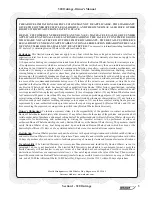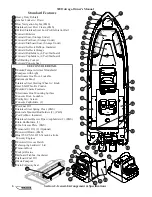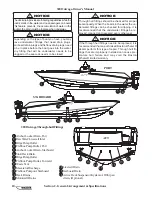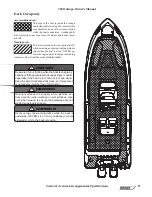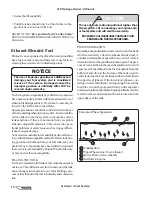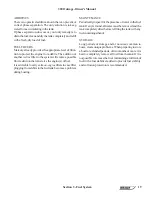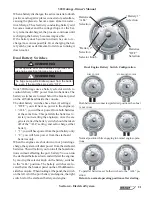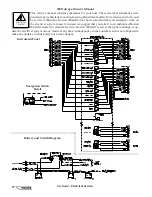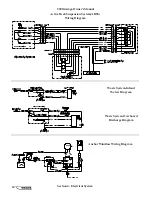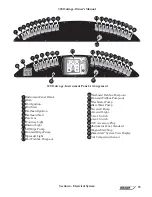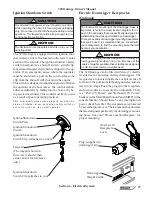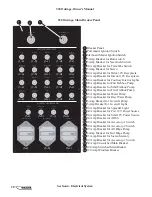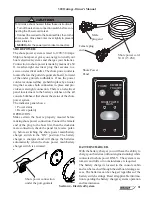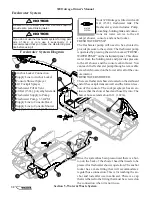
Section 3 - Fuel System
320 Outrage-Owner’s Manual
Remote Oil Tank Location
(sterndeck has been removed)
Optional engine oil supply, 2-3 Gal. (11.3L)
The 320 Outrage may be equipped with a remote oil
system. This system consists of two 3-Gal.(11.3L)
reservoir tanks and hoses which contain and meter
lubricating oil to the engine(s). The tanks have an
external fill located on the aft side of the cockpit tran-
som wall. Access to the tanks is through the
motorwell access hatch. When recapping the fill
make sure that it is secure to prevent spills and to
prevent the intrusion of water into the system. Your
remote oil tank is secured by a nylon strap and quick
release clip. Little maintenance is required for the
remote oil system, aside from checking the hoses for
abrasions and cracks and hose clamps for proper
tightness. The tank should not be exposed to ultra-
violet light, rain or seawater for extended periods of
time.
Remote Oil System (Optional)
There is a danger that static electricity can ignite gaso-
line vapors that have not been ventilated outside an
enclosed area. Use extreme caution when fueling
your boat from a source outside the regular venues,
(e.g. marinas, fuel service stations.)
Your boat has safety features that can be circum-
vented by not adhering to standard fueling practices.
Your boats bonding system protects it from creating
and discharging static electricity.
Your boat must be in contact with the water or a land
based grounding system. Here are some helpful sug-
gestions to keep you safe from static electricity while
refueling your boat.
• NEVER fuel your boat in unsafe conditions such
as: suspended on a sling or in a situation that in-
creases the likelihood of static discharge.
• NEVER use homemade containers to fill your fuel
tanks.
• Fuel carried on-board outside of a fixed fuel sys-
tem should be stored in an approved container or
in a portable tank such as provided for outboard
engines and be stowed safely outside of the engine
or living compartment(s).
• Shut down the engine(s), motors and fans prior to
taking on fuel. Any ignition sources should be ex-
tinguished before filling the fuel tank(s).
• Close all ports, windows, doors and hatches.
• Fueling should never be done at night except in
well-lighted areas.
• Always keep the fuel nozzle in contact with the
fuel fill plate or the edge of the fuel tank opening
throughout the filling process.
• Allow areas where gasoline vapors could collect
to be ventilated before starting the engine(s).
• Wipe any spillage completely and dispose of rags
or waste on shore.
Static Electricity and the Fuel System
replacement parts. Your authorized Boston Whaler®
dealer will have all the parts information you will need.
TANK CLEANING:
Excessive water and sediment may force you to con-
sider having the tank professionally cleaned. If you are
frequently changing fuel filter/water separators and no-
tice a loss in power, consult a professional tank cleaning
contractor regarding this procedure and proper disposal
of residue and water.
17

